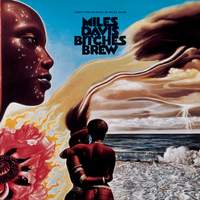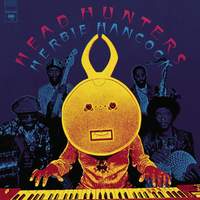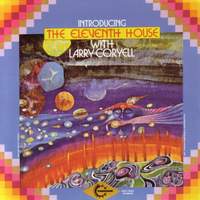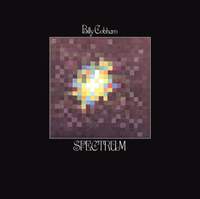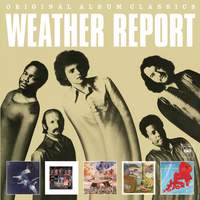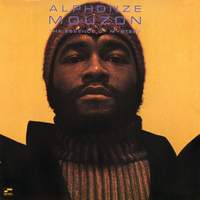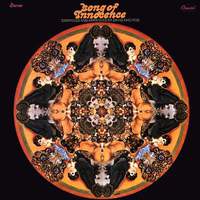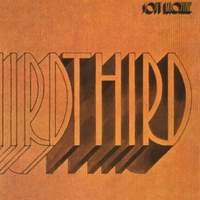Jazz Genre Guides,
Jazz Fusion
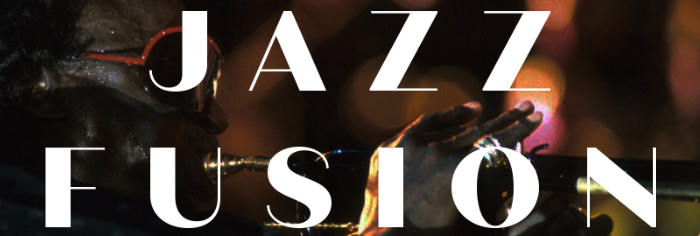
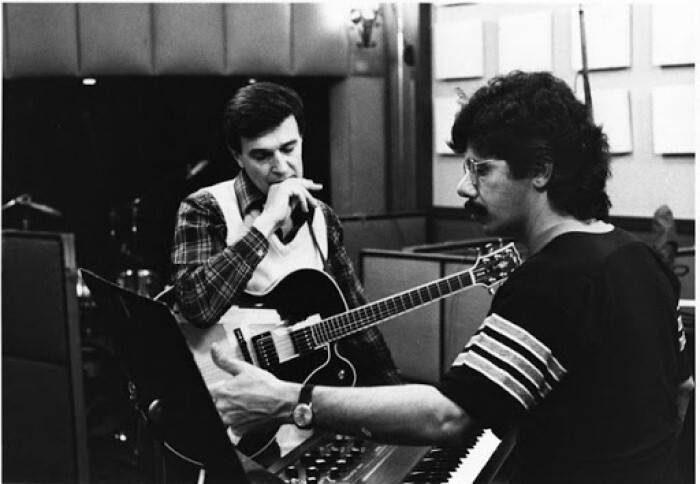 Jazz fusion is surely one of the most nebulous genre names ever concocted, being, by definition, an attempt to describe music which incorporates multiple outside influences. The term appears to have been coined in a review of David Axelrod's 1968 debut album Songs of Innocence, which combined rock, jazz, R'n'B and orchestral elements, but fusion soon became shorthand for two main sub-genres, jazz rock and jazz funk, which will be the focus for this short guide.
Jazz fusion is surely one of the most nebulous genre names ever concocted, being, by definition, an attempt to describe music which incorporates multiple outside influences. The term appears to have been coined in a review of David Axelrod's 1968 debut album Songs of Innocence, which combined rock, jazz, R'n'B and orchestral elements, but fusion soon became shorthand for two main sub-genres, jazz rock and jazz funk, which will be the focus for this short guide.
To the purists, fusion is dismissed for being the point at which jazz sold its soul to rock ‘n roll, jettisoning the nuance of acoustic instruments in favour of amplification, and sacrificing the freedom of jazz time-keeping to the dumbed-down tyranny of rock’s backbeat. To the loyal army of fusion lovers, this is to miss the point entirely, as they see fusion as the point where jazz truly comes into its own; a cross-pollination with rock, rhythm ‘n blues, funk and world influences that produced something wonderful and innovative. In reality, fusion was simply the logical next-step for jazz within the context of the cultural explosion that was the sixties, when it was nigh on impossible to ignore all of the new sounds being created.Try to put yourself in the shoes of Miles Davis, Herbie Hancock or Joe Zawinul for a moment - what would you do after hearing James Brown’s ‘Papa’s Got a Brand New Bag’ for the first time in 1965? Try to ignore it and carry on as if it never happened? Or what if you’d heard the studio-created abstractions of The Beatles ‘Tomorrow Never Knows’ in 1966? Creative artists have always needed to grab a piece of the action when something new comes along, and the musicians who created fusion were no different. The purists also overlook the fact that commercially jazz had been hit hard by the arrival of rock’n’roll, and been on the decline since the turn of the sixties. It urgently needed to reach out to a new audience, especially as black audiences were largely listening to soul and funk instead. Besides, pop music had spawned from jazz in the first place, with big band and swing mutating into jump blues and jive in the forties, so in many ways it was simply feeding back into itself. These arguments have faded over time, but the music certainly hasn’t, and it continues to nourish contemporary artists of the present day, from The Comet is Coming to Kamaal Williams, Thundercat to Tenderlonious.
 For the purpose of this guide I am picking from the first wave of fusion – roughly from 1969-75 – arguably the period when it was at its most experimental and vital, and largely based around the music coming out of Miles Davis's circle in New York. It's no coincidence that these are also considered the golden years for many of the other movements music. There was the explosion in ‘progressive rock’ with bands like King Crimson, Soft Machine, and Yes, all of whom were incorporating advanced jazz techniques into their music. In Germany Kraftwerk, Can, Neu and Amon Düül were getting more precise in their productions, sowing the seeds for electronica to come, and likewise in Jamaica the rhythm’s of American R’n’B were being morphed into reggae, with Lee Perry and King Tubby then adding reverb and delay to create dubs, and inventing the concept of remixing. All of these concurrent developments share a similar trajectory to jazz fusion, with an initial explosion of ideas followed by a period of refinement when many of the great albums were recorded. Most importantly all of these new genres influenced each other, with jazz fusion being the most absorbent of the lot.
For the purpose of this guide I am picking from the first wave of fusion – roughly from 1969-75 – arguably the period when it was at its most experimental and vital, and largely based around the music coming out of Miles Davis's circle in New York. It's no coincidence that these are also considered the golden years for many of the other movements music. There was the explosion in ‘progressive rock’ with bands like King Crimson, Soft Machine, and Yes, all of whom were incorporating advanced jazz techniques into their music. In Germany Kraftwerk, Can, Neu and Amon Düül were getting more precise in their productions, sowing the seeds for electronica to come, and likewise in Jamaica the rhythm’s of American R’n’B were being morphed into reggae, with Lee Perry and King Tubby then adding reverb and delay to create dubs, and inventing the concept of remixing. All of these concurrent developments share a similar trajectory to jazz fusion, with an initial explosion of ideas followed by a period of refinement when many of the great albums were recorded. Most importantly all of these new genres influenced each other, with jazz fusion being the most absorbent of the lot.
As with my previous guide to free jazz, this is a subjective list. By 1975 most jazz players had experimented with fusion in some form, so it’s a very diverse genre. Please do let me know who you think I have missed out and we can consider for future guides.
Whilst it would be pointless to claim any single artist suddenly invented fusion, Miles Davis and his circle of musicians from the mid-sixties onwards would certainly become the epicentre of the revolution. Although Davis had released arguably the first true fusion record with the more focussed In A Silent Way the previous year, the sprawling Bitches Brew pushed the rock influence several notches further, and has a level of abstraction and pervading air of menace that still leaves listeners enthralled today. The three keyboard lines of Joe Zawinul, Chick Corea and Larry Young, combined with McLaughlin’s guitar licks give the music an amorphous, shape-shifting quality, with Lenny White and Jack DeJohnette’s polyrhythms adding to the voodoo vibe. Davis’s majestic playing on Zawinul’s Pharaoh's Dance still makes the hairs stand on end.
Available Formats: 2 CDs, MP3, FLAC
Head Huntershas come to be viewed as the definitive jazz funk album and was the culmination of a path Herbie Hancock had been treading since he introduced overt rhythm and blues, and soul music influences into the soundtrack album Fat Albert Rotunda. Working with long-time collaborator Bennie Maupin, Head Hunters remains one of the most colourful jazz fusion albums ever recorded, the improvisations on all four tracks founded on irresistible melodies, including a recap of his early hit ‘Watermelon Man’. Harvey Mason’s drumming is augmented with Bill Summers’s array of tribal percussion instruments like the agogô, balafon, gankogui and hindewhu, all adding to the thick, stewy atmosphere, whilst Hancock seamlessly moves between multiple synthesisers and keyboards.
Available Formats: MP3, FLAC, Hi-Res FLAC
Named after the Hindu deity, there is appropriately nothing low-key about John McLaughlin’s Mahavishnu Orchestra, found at their best on their debut The Inner Mounting Flame. Hot on the heels of his appearances on In a Silent Way, Bitches Brew and Jack Johnson for Miles Davis, McLaughlin was the pre-eminent fusion guitarist, whose sheer dexterity naturally pushed him towards the rockier side of fusion. Jerry Goodman’s electric violin and Jan Hammer’s battery of keyboards and organs help create the thick, orchestral textures, whilst drummer Billy Cobham and bassist Rick Laird lay down some of the most rocking backbeats to be heard on any fusion project. Excessive, yes, but gloriously so (unlike later albums which collapse under the pomp).
Available Format: CD
There’s a strong argument to giving guitarist Larry Coryell credit for making the first true fusion recordings with his early band The Free Spirits, and also with vibraphonist Gary Burton, and flautist Herbie Mann on his classic Memphis Underground in 1968. Recorded with his band Eleventh House in 1974, Introducing is fusion at its most colourful and entertaining, covering a large range of moods, but tending towards up-tempo romps like ‘Joy Ride’, ‘Birdfingers’ and ‘Right On Y’all’, superb showcases for Coryell’s unique electric guitar style, and featuring some excellent Chick Corea contributions on keyboards.
Available Formats: MP3, FLAC
Having appeared on Miles Davis’s most rock-influenced album A Tribute to Jack Johnson, and powering the Mahavishnu Orchestra, it is no surprise that Billy Cobham’s debut album Spectrum should contain some of the most exciting fusion ever recorded. A diverse record, as befits the ‘spectrum’ of the title, from the Tommy Bolin lead guitar assault of ‘Stratus’ (later sampled by Massive Attack for the track ‘Safe From Harm’) to the deep funk of ‘Snoopy’s Search’, with room for the obligatory drum solo on the mesmerizing ‘Anxiety’, this could be an ideal place for the fusion newcomer to start. My personal favourite is the gonzo energy of ‘Taurian Matador’, where the sense of the musicians collectively egging each other on is distinctly palpable.
Available Formats: CD, MP3, FLAC
Weather Report was formed around pianist Joe Zawinul and saxophonist Wayne Shorter, colleagues from the Miles Davis group of In a Silent Way and Bitches Brew, and became probably the best know fusion group of the seventies, culminating with 1977’s Heavy Weather and the genre-defining ‘Birdland’, the epitome of slick musicianship and production. The eponymous debut from 1971 is a far more gnarly beast though, extending the abstractions of Bitches Brew with a new level of confidence, especially in Zawinul’s impressionistic Rhodes electric piano lines. Bassist Miroslav Vitous, percussionist Airto Moreira, and drummer Alphonse Mouzon churn out a complex web of ever-evolving grooves, allowing Shorter’s soprano sax to stand out in stark contrast, measured and unflustered. Echoes from this record can be heard in electronica and improv being produced today.
Available Format: 5 CDs
Alphonze Mouzon’s vision of fusion comes with a heavy dose of funk, and both sartorially and sonically he was aligned with the Afro-futurism of George Clinton’s Funkadelic and Parliament projects. Being a drummer, The Essence of Mystery is unashamedly focussed on the groove, and features the dancefloor hit ‘Why Can’t We Make It’, but there is lots of variety in the tracks, with a highlight being the delightful ‘Spring Water’, with a memorable lead for Buddy Terry’s soprano saxophone.
Available Formats: MP3, FLAC
Aside from being the first album to be termed as 'fusion', David Axelrod's Song of Innocence is a unique project that deserves to be heard on its own terms. In under 30 minutes, Axelrod blends rock, jazz, gospel, and classical together, into a suite with a real sense of sweep, almost like a soundtrack to an imaginary film, all performed by the finest session musicians in LA.
Available Formats: MP3, FLAC
First emerging as part of the Canterbury psychedelic scene with 1967's Volume One, by 1970 Soft Machine had largely sidelined the vocals and mutated into a full-blown jazz rock outfit, based around organist Mike Ratledge, drummer Robert Wyatt (later to have a successful career as a quirky singer-songwriter), bassist Hugh Hopper and saxophonist Elton Dean. Undoubtedly influenced by the work of Miles Davis, they had their own distinctly eccentric British spin on fusion, releasing Third only three months after Bitches Brew.
Available Format: 2 CDs
Released in September 1972, Return to Forever marked Chick Corea's debut release, as well as being the debut for the group of the same name. Featuring Brazillian vocalist Flora Purim, the album signalled a lighter, more laid back sound within fusion, and established Corea as one of the most popular pianists of his generation.
Available Formats: CD, MP3, FLAC


